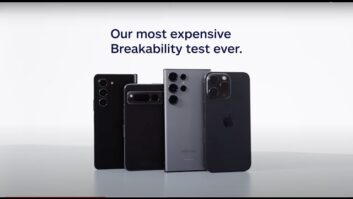Reston, Va. — Sprint Nextel’s rollout of mobile WiMAX service will likely go more slowly than previously planned now that the company and wireless-broadband operator Clearwire terminated a letter of intent to jointly build a national network and market the service under a common brand.
The planned joint venture, announced only a few months ago, was promoted as “fostering quicker, broader and more efficient deployment of a mobile WiMAX broadband network than either company could accomplish on its own,” the companies said at the time.
As the two companies tried to iron out details of their joint plans, a spokeswoman said, they “delved into a level of complexity … that didn’t fit in with the type of positive customer experience” that Sprint wants to offer. In recent weeks, she noted, the carrier has begun to focus heavily on two core strategies: “simplifying the business” and “improving the customer experience.” The carriers’ weakening financial performance and loss of subscribers led to the new focus, analysts have said.
Despite the breakup with Clearwire, Sprint intends as previously planned to soft-launch mobile WiMAX service by the end of the year in Chicago and Washington-Baltimore and initiate “a commercial launch in 2008,” said Keith Cowan, Sprint’s president of strategic planning and corporate initiative. The pace of that 2008 launch, however, wasn’t described in detail, and it’s more than likely to be slower than the pace under the original joint-buildout proposal.
Under the scuttled build-out plan, the two companies would build out their respective 2.5GHz networks to a combined population of about 100 million people by the end of 2008, with seamless roaming enabled between the deployed areas. Sprint was to build in markets covering about 70 million people by the end of 2008, a spokeswoman said, and Clearwire was to build in markets with a population of about 30 million by the end of 2008, she said.
Now, however, Sprint isn’t saying whether it will, on its own, meet its part of the joint-buildout timetable. All that the company would say was that “in light of this announcement, Sprint is reviewing its WiMAX business plans and outlook, and the company expects to comment further on these topics early next year.”
Whatever Sprint’s timetable turns out to be, it’s still required by the FCC to build out a 2.5GHz network in at least 20 markets, or basic trading areas, with a population of at least 30 million people, the spokeswoman said.
Under the letter of intent, Sprint Nextel was to focus its long-term efforts primarily on geographic areas covering about 185 million people, including 75 percent of the people located in the 50 largest markets, while Clearwire would focus on areas with a population of about 115 million people.
Although the two companies ripped up their letter of intent, Sprint said it expects to cooperate with Clearwire on service launches in such areas as roaming, frequency interference coordination, spectrum exchanges, technology development, and network standards, the company said.
Under the previous plans, cooperation was to have been much more extensive. For example, Sprint Nextel and Clearwire would build their respective portions of the nationwide network, enable roaming between their territories, and work jointly on product and service evolution, infrastructure sharing, branding, marketing and distribution.
Sprint Nextel and Clearwire would market mobile WiMAX services under a common service brand, and Clearwire would offer mobile WiMAX services in Clearwire’s territories through Sprint Nextel’s retail stores as well as through its own distribution channels. Sprint Nextel also planned to provide dual-mode (CDMA-WiMAX) service nationwide over both its own and Clearwire’s portion of the WiMAX networks.
Sprint Nextel was also to take the lead in establishing relationships with national distributors and other potential strategic partners, including wholesale or mobile virtual network operator (MVNO) arrangements. Clearwire would also be able to offer Sprint Nextel’s third generation cellular voice and data services as part of a bundle or on a stand-alone basis to its customers and allow Clearwire to provide dual-mode services to its customers.
“Our joint efforts will result in customers benefiting from a more extensive network, operating sooner and using our respective spectrum more efficiently than either company could have on its own,” Clearwire CEO Ben Wolff said at the time.













